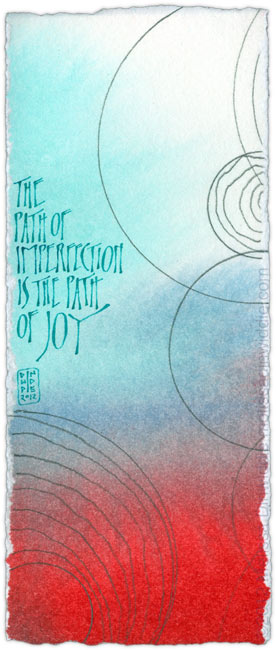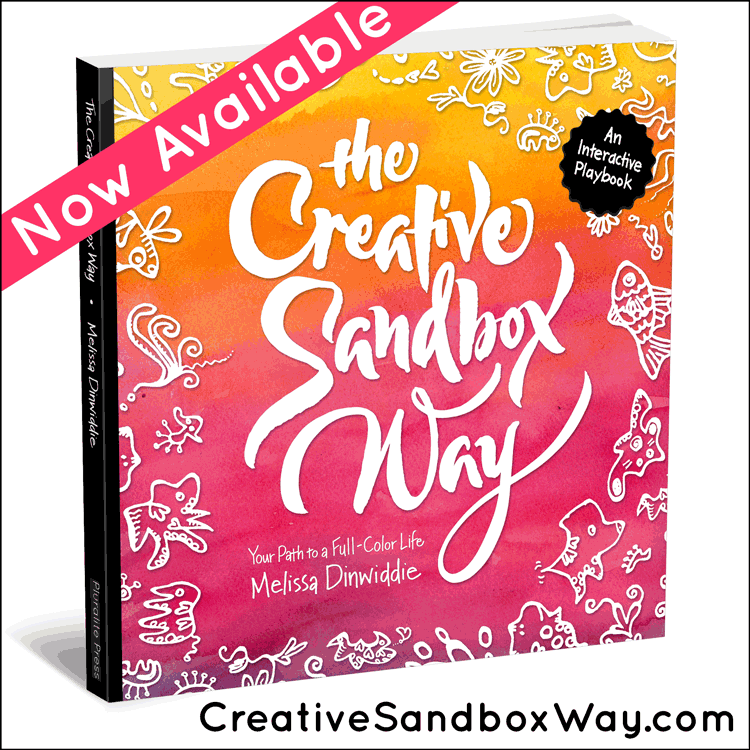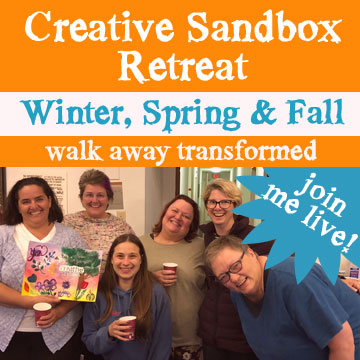 Last week I shared with my Academy members some of the gory details from my sordid past. In particular, my history with body dysmorphia and eating disorder. And in very particular particular, my history with bulimia.
Last week I shared with my Academy members some of the gory details from my sordid past. In particular, my history with body dysmorphia and eating disorder. And in very particular particular, my history with bulimia.
“Eating disorder” is a tidy-sounding title for a very messy disease that’s surprisingly akin to alcoholism in a lot of ways.*
In fact, pick your addiction: alcohol, cocaine, nicotine, TV, sex, gambling, food, or anything else… Scratch the surface and you’ll find a lot of the same underlying mechanisms and challenges: The behavior patterns, the denial, the feeling that you’re not the one in control, and the resulting shame and self-loathing, the bone-crushing challenge of regaining health.
Of course there are also plenty of differences. For one thing, an alcoholic has the option of giving up drinking, but food is not really something that can be “kicked.” In fact, you could say that all of us are born addicted to food.
I confess, I often wished I could just quit food — I actually thought of myself as a “failed anorexic.” My goal was to be able to starve myself skinny, but I seemed to lack that level of self-control. (Or one might argue that I retained that level of survival instinct.)
The upshot, though, is that I was pretty sick.
As I shared in the Academy session, in high school I would write out daily menus for myself — exactly what I would eat at each meal, and the precise calorie count, all adding up to starvation rations.
Then, not surprisingly, every day I would “break” my diet, triggering a rush of shame, guilt, and anxiety that I was going to get fat, followed by much mental self-flagellation.
I was a failure. An idiot. A fat pig.
(For a little context, I should probably add that at the time, I weighed anywhere from ten to fifteen pounds less than I do now. In other words, I was pretty thin. I just didn’t see myself that way.)
What always happened next was a textbook example of what researchers have termed the “What the Hell Effect.” (Yes, that’s a scientific term. Do a Google search.)
In a desperate attempt to soothe my mounting anxiety and bad feelings about myself, I’d turn to the very thing I was trying to avoid: food. Especially “forbidden” foods.
This, for me, was the heart of the bulimic reaction. I took no prisoners. The concept of self-compassion wasn’t even on my radar.
I’d mentally beat myself to a pulp, then grasp at food as if my life depended on it, maniacally stuffing myself long past the state of satiation. I couldn’t even really taste the food anymore. It was as if some switch had been flipped, and I had to keep eating, keep eating, keep eating, until I couldn’t physically eat anymore.
But of course stuffing myself didn’t make me feel any better. It made me feel approximately a thousand times worse — now I was really making myself fat! My distended belly was proof!
If I didn’t do something quick, it felt, all that food would permanently meld itself to my thighs, and I’d be on a one-way track to serious obesity.
So I’d stick my finger down my throat until I wretched, forcing myself to vomit the contents of my stomach into the toilet. This brought immediate relief of a sort, but combined with even more shame and self-flagellation.
Who did such disgusting things? What was wrong with me? Why couldn’t I just stop eating?
Then of course I’d give myself an even stricter menu the following day.
What a disaster.
So why am I telling you all of this?
What does all of this have to do with living a creative life?
Everything, as it happens.
When I was so obsessed with starving myself to fit an unrealistic expectation of “beauty” that it felt like food was running my life, not me, how much energy do you think I had to create with?
When I was caught in a web of shame, unable to allow myself to be a real, imperfect human being, how much of my true self do you think I could share with the world?
When being unnaturally skinny was my primary goal in life, how much do you think I was able to focus on other goals that might actually make a real difference or leave a legacy?
The answer to all of these questions is the same: not much.
Living a big, bold, creative life means releasing the hold of external expectations and allowing oneself to be imperfect. Self-flagellation has no part in this recipe.
Yet flagellating ourselves is what most of us do when we feel inadequate.
We spend our lives trying to manage how we’re perceived, creating carefully edited versions of ourselves to show to the world. And still we don’t feel good enough. So we beat ourselves up.
The good news is, it doesn’t have to be this way.
The 4 Elements of Shame Resilience
Brené Brown spent seven years researching shame — what sends women into shame, and what helps them to bounce back. After sharing the gory details of my sordid past in class with Your Big, Bold, Creative Life Academy last week, I shared some of Brown’s findings from her book, I Thought It Was Just Me (But It Isn’t).
Brown defines shame as:
The intensely painful feeling or experience of believing that we are flawed and therefore unworthy of love and belonging – something we’ve experienced, done, or failed to do makes us unworthy of connection.
I never would have associated my bulimia with “shame” — it’s such a vague and hazy term that’s often hard for me to wrap my head around. But looking back, I can say that my eating disorder grew out of a feeling of being flawed, not good enough, which I tried to manage by controlling the shape and size of my body. Which, in turn, made me feel even more shame — for not being naturally “perfect,” for not being “in control,” for being someone who did something so disgusting as vomit up her food!
And of course I’m not alone.
Brown interviewed thousands of women about shame, and not only is it universal, but shame around body image/appearance came up in over 90% of her research subjects. (Honestly, I’m surprised it wasn’t 100%!)
That’s the bad news.
Thankfully, we can develop shame resilience.
Brown discovered four elements that came up over and over in the women with the most resilience to shame:
- The ability to recognize and understand your shame triggers
(as I say in my Golden Formula, self-awareness + self-compassion = the key to everything good — this is the self-awareness piece) - High levels of critical awareness about your “shame web”
(ie, an ability to see how your experience fits in the big picture, to contextualize rather than pathologize) - The willingness to reach out to others
(which is often the opposite of what we want to do when we’re in shame) - The ability to “speak shame,” to define and give voice to your experience
(which, again, is often the opposite of what we want to do, and in fact, shame is so confusing and blindsiding that defining what is happening when we’re in shame often feels impossible)
Sharing my story in class, and in this blog post, are examples of element number four above, “speaking shame.”
None of the four elements of shame resilience were present for me in the midst of my illness. It took years for me to recognize what had happened to me, and how to untangle the mess. Looking back, I can see that each of these four elements played a role.
Gradually, over time, I started asking myself questions such as:
“Hmmm… Looking at the Beautiful People on TV and in magazines sends me into a panic spiral, convinced that I. Must. Lose. Twenty. Pounds. Now! But from past experience, do I seriously think that’s going to actually make me happier? Um, that would be a ‘no.'”
“Hmmm… Is this physical ‘ideal’ I’m striving for a natural or objective ideal? Given that Marilyn Monroe would be considered overweight by today’s standards, that would be a ‘no.'”
“So who benefits from women like me obsessing over our weight? Um, the multi-billion dollar diet and beauty industries, but certainly not us.”
So I stopped watching television and reading fashion magazines (unless it was to deconstruct them from a Feminist perspective).
I gave away all my “skinny” clothes and bought a new wardrobe of clothes that actually fit me, that I felt good in exactly as my body was right then.
I started coming out of the closet as a bulimic, lifting the veil of secrecy around my eating disorder, and reaching out for support when I struggled.
And I started sharing my story — both the gory details of my sordid past, and my present, too.
The truth is, as I get older, I’m more accepting of my imperfect body, and more self-compassionate, but I’m still not free from body image-related shame triggers.
The truth is, I wrote my satirical song The Last Five Pounds for me, because dammit, I still want to lose that last five pounds! And I feel ashamed that I still want to lose that last five pounds. And ashamed that my body seems to want to be five pounds heavier than it did a few years ago, even when I get lots of exercise and eat super-healthy. How ridiculous (I think) that I haven’t achieved full self-actualization around my body image yet.
Writing about it, satirizing it, talking about it — speaking shame — helps both to take my own power back, and to open an aperture for a larger conversation around the issue of body image issues and eating disorders.
So here are some questions I’m asking now:
How might the world be different if we shared the truths about our lives?
What might you be able to create if the secret burden of your own past no longer weighed you down?
Our lives might look less shiny from the outside, but I’d bet they’d be a helluva lot bigger and bolder on the inside.
I invite you to jump on in and join me. The water’s fine.

PS – Pssst! Know someone who might benefit from seeing this today? Pass it on!
*When a friend brought me with her to some AA meetings years ago, I was astonished to find how similar my experiences were to the stories I heard shared.





Dear Melissa,
I love you. Thank you for sharing your pain. I know this pain, and shame and inner critic beyond belief that you speak of. Trying to keep a lid on it is far too tiring. Kudos to you inviting us to BE all of it. The light, the dark and all the shades in between. The dark is never as dark as we think–especially when we open the doors and let the light in.
You rock! Love your tenderness, tenacity and GRIT.
~Rebecca
Dear Rebecca,
I love you right back. Thanks for taking the time to leave a comment here. 🙂
xo
Melissa
Good girl, sharing what might help someone else, as well as giving your secret some air.
Thanks, Kale. 🙂
Melissa,
I understand all too well the sickness (emotionally and physically) that come with bulimia. I was really sick in my early 30’s and have continued to struggle since. At this point I’m about 75 lbs overweight (and 85 lbs more than I was at my sickest point) and I’m still dealing with self loathing and frustration. Occasionally I still stick my finger down my throat, but more often I just eat to ease whatever it is inside of me that says I’m not good enough, never have been, never will be.
Thanks for sharing your story. It helps. Really.
Lynda
Lynda, I’m so sorry you’re still struggling with the bulimia. I truly empathize, and send you so much love and compassion. I know practicing self-compassion has been such a life-changer for me, and cannot recommend it highly enough. Anything Kristin Neff has (TED talks, her book Self-Compassion) are great resources.
You don’t deserve this misery. Nobody does. You were born worthy of love and belonging, and nothing can ever change that.
xo
Melissa
A few months ago, I read Zoobiquity, a book about what medical doctors can learn from veterinary doctors and vice versa. It touches on many different issues, physical and psychological, among them cutting, anorexia, and (if I remember correctly) bulimia. For me, as someone who takes comfort in being an animal and being a part of the natural world, I found this book very healing.
Bon courage in your journey and thank you for sharing it!
I think I’ve heard of that book on the radio.. I’ll have to look it up! Thanks for the recommendation, Gwenn! 🙂
Wow, you are one brave soul to share that story online and I thank you from the bottom of my heart. It is truly amazing how many of us hate the way we look and, therefore, devalue ourselves, and sometimes put off what we can contribute to the world because of fears around what we look like! My current mission is to open up the dialogue about mental illness, drug abuse, and addiction because that is still so silent and one of the last great stigmas. Sharing our stories with each other is so powerful. Thank you for your bravery. It is a true gift of love.
Thanks, Jenni. And you’re welcome. And kudos to you on your current mission.